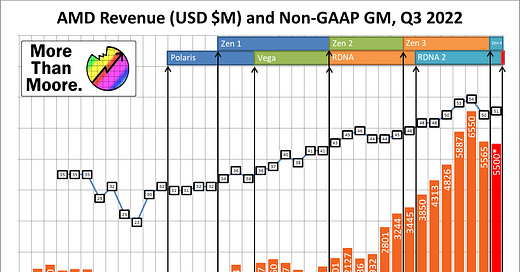Originally written Nov 3rd, posted Nov 11th
Ultimately for AMD, the year is going to be a tale of two halves. The promise of a strong Q3 and Q4 has been sunk by strong macroeconomics and a strong drop in the consumer PC market. While the Data Center market and embedded segments remain strong, it’s the consumer that’s dropped from a $2B quarter to a $1B q…



